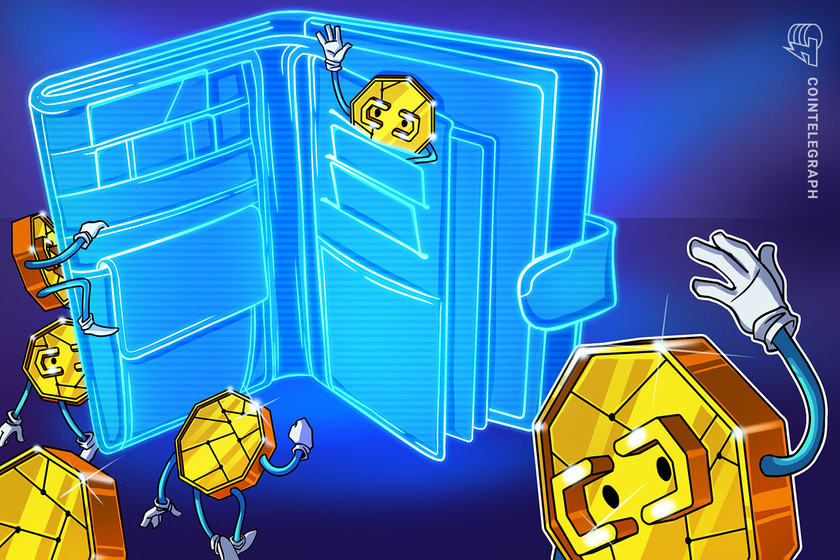More resilient and user-controlled than the AWS: Colin Evran’s vision for Filecoin
In the beginning of 2021, Filecoin was a relatively unknown decentralized peer-to-peer storage service with a total network capacity barely making a dent in the digital storage space. Less than two years later, the Filecoin team claimsthe blockchain has grown to eclipse 10% of the storage capacity of Amazon Web Service, the most popular vendor in the cloud infrastructure services market. This includes use of the storage — by well known blockchain firms such as OpenSea and Magic Eden — of some 239.03 terabytes of nonfungible tokens (NFTs) worth an estimated $26.6 billion as of early September.

NFT storage on Filecoin | Source: NFT.Storage
How did Filecoin become so successful;? And what motivates its developers to grow the ecosystem? Colin Evran, ecosystem lead at Protocol Labs, the creator of Filecoi says a big factor in his desire to join Filecoin was his disillusionment with how things operate in Web 2.0.
“It’s still going in the wrong direction,” he said. “A handful of companies are now controlling the world’s data, in my opinion, without checks and balances in many ways. And I just thought such levels of centralization over a period of many decades isn’t going to be the answer for everyday users.
“I fundamentally believe if you zoom out 40 years from now, the answer is not like AWS storing 100% of the world’s data. I don’t think that’s good for society. I don’t think that’s what users really want,” he said.
Evran took some lateral steps in his path towards the blockchain sector. Having finished Ivey Business School at Western University in 2006, he first became an analyst for McKinsey before venturing into the field of private equity. Then he returned to the academic world to get his Masters from Stanford Business School and then for his Master’s.

Colin Evran of Filecoin | Source: Twitter
After graduation, Evran founded a startup in the construction tech space called “Yard Club.” Four years later the firm was sold to Caterpillar, the world’s largest construction equipment designer.
As told by Evan, the financial surety from the deal gave him the ability to focus on a project that was much more in-depth. “I really wanted to work on a piece of technology that could conceivably impact every man, woman, child, and every company in the world if it was successful. So a good friend of mine introduced me to Protocol Labs, the creator of Filecoin.”
Filecoin’s Interplanetary File System (IPFS) enables users to store and transfer content in a peer-to-peer manner. It is the heart of Filecoin, containing three components; unique identification via content addressing, content linking through directed acyclic graphs (DAGs), and content discovery via distributed hash tables.
As its incentive layer, Filecoin serves to verify that all data is stored with the appropriate cryptographic proofs. Storage providers on Filecoin have two primary sources of revenue, block rewards and network fees. Block rewards are allocated proportionally based on submitted cryptographic proofs of the data they store.
Currently, there are about 25,000 transactions on the Filecoin blockchain per day and in total there is about 127 pebibytes (1PiB = 1,125,900 Gigabytes) worth of data stored on it. In terms of total capacity, Filecoin developers say that the network is currently at around 10% of the AWS’ storage capacity.

Filecoin network metrics | Source: Starboard Ventures
At the beginning of the year, storing data on Filecoin was at less than 1% of the cost of comparable services on AWS. But now, Evran explains that some storage costs have fallen into negative territory, while the typical storage costs have also decreased to less than 0.5% of centralized providers.
“With such a magnitude of cost reduction, many small businesses and freelancers worldwide can now afford to store people’s data.” He continues: “It’s similar to how Airbnb unlocked the ability for average homeowners to host guests, which wouldn’t have been possible in a hotel-dominated world.”
For Evran, the novel Filecoin Virtual Machine is an exciting technological development for the ecosystem this year. “Filecoin has been a storage and retrieval market thus far. But what the FVM can unlock is a multibillion-dollar DeFi economy on top of Filecoin,” he said.
“With complete compatibility with the Ethereum Virtual Machine (EVM), developers can build across the two networks. We could bring up new use cases such as on-chain voting, data-based decentralized autonomous organizations (DAOs), decentralized verifiable computation, etc.”
At the moment, Filecoin storage providers have about one billion dollars in collateral to store deals and grow operations. Via further updates, it is possible to create DeFi instruments that auto-renew deals for token holders, creating essentially a ‘perpetual storage’ network.
Going forward, Evran explains that his vision is to see Protocol Labs and Filecoin to become a hub for building decentralized technologies. “We helped seed the foundation of IPFS, which is now used by every single major blockchain from Ethereum and Polkadot. But we also want people to come to our community and develop something transformational that’s aligned with our values for Web 3.0. In spite of the ongoing crypto winter, Filecoin still holds its place among top players with a total market cap of $1.8 billion.









